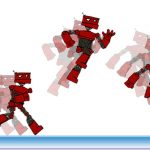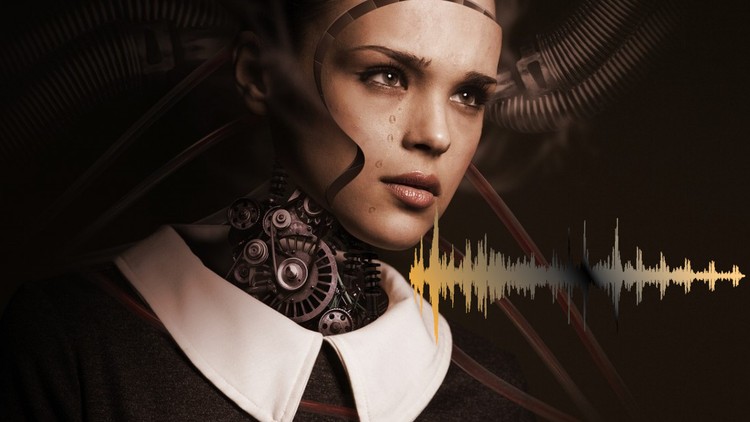Computer Vision: Python Face Swap & Quick Deepfake in Colab
Custom Face Swap using Python and OpenCV & Deepfake Image Animation using ‘First Order Motion Model’ paper in Colab
What you’ll learn
Computer Vision: Python Face Swap & Quick Deepfake in Colab
-
Python-based Custom Face Swap Application with Image, Video, and Camera. Deepfake Videos based on First Order Motion Model Image Animation Paper
Requirements
-
A decent configuration computer (preferably Windows) and an enthusiasm to research with Deepfake Technology
Description
Hello and welcome to my new course ‘Python Face Swap & Quick Deepfake using Google Colab’
You know, there is an old phrase that says ‘seeing is believing. But in the world of ‘Deepfake’ what we see is not always true. Let’s define deep fake with the help of an example video. Here is it.
I used only a single stamp size photo of these people to create these videos. Yes, you heard it right. With only a single face image and few minutes of time with a normal computer, you can create deepfake of anyone. You can even make dead people talk or even sing for you.
Yes! Be prepared to be amazed. Before we proceed any further, let me explain the list of contents that are included in this course. This course is divided exactly into two halves.
In the first half, we will be creating a basic python-based face swap application. Before we proceed, we will have an introduction to the deep fake technique, its applications, advantages, and disadvantages. Then we have to prepare our computer with all the dependencies installed. We will be installing Anaconda, the platform, and IDE for our python programming. Later there are few optional sessions for those who want to learn the basics of the python programming language basics.
Computer Vision: Python Face Swap & Quick Deepfake in Colab
Later we will install the rest of the dependencies required to build our custom python face swap application. After that, we will write the python code line by line to complete the whole program with more than 300 lines. Alternatively, you may also download the complete code from the google drive link provided in the last session of this course. At first, we will be doing the face swap using two static images. One as the source image and the other as the target image. Later we will try it for real-time video from our computer’s web camera. And then we will modify it to make it work with a pre-saved video saved on our computer.
From the examples, you can see that this was just a basic face swap program and is not at all perfect. We were doing it just to learn how things work behind the scenes.
Later we will proceed with implementing deepfake based on a paper called ‘First Order Motion Model for Image Animation’ Submitted to Cornell University by Aliaksandr Siarohin, Stéphane Lathuilière, Sergey Tulyakov, Elisa Ricci, and Nicu Sebe
Since training a deepfake involves expensive GPUs, we have an alternate plan to use google Colab’s free GPU. We will be preparing our google drive by creating folders and uploading the sample driving video, based on which the target image needs to be animated and also the target images or source images.
Also, we will be downloading a copy of the demo google colab notebook and connect with google drive. Then we will clone the first-order motion model repository from google drive.
Later we will also proceed with cloning the face-alignment repository. We will install and set it up in our google colab. Then we will move the files into corresponding folders and start with cropping the driving video using a built-in python program.
After that, we will download the frozen inference graph of the already trained model to our google drive. And now it’s all set to proceed with the animation of the source images based on the driving video. Once completed we will download the animated video. We will also do the same for a few of the other source images too.
The animated video will not be having audio. So we have to mix the audio to it using any free or open-source video editing tool available online. We will do that in our next session and finally, we have all the deepfake animated videos with audio included.
As the final session, we will also discuss how we can save the limited free GPU time offered by Google and the workaround if the GPU time is exceeded.
Just another word before I conclude. Please please make use of the contents and techniques mentioned in this tutorial very responsibly. It’s intended only for learning and research purpose. I as an instructor or the platform in which I host this course will not be liable for any illegal or irresponsible use of this technique.That’s all about the topics which are currently included in this quick course. The code, images, and weights used in this course have been uploaded and shared in a folder. I will include the link to download them in the last session or the resource section of this course. You are free to use the code in your projects with no questions asked.
Also after completing this course, you will be provided with a course completion certificate which will add value to your portfolio.
So that’s all for now, see you soon in the classroom. Happy learning and have a great time.
Bibliographies and Reference Credits
- NIPS Proceedings – First Order Motion Model for Image Animation – Aliaksandr Siarohin, Stéphane Lathuilière, Sergey Tulyakov, Elisa Ricci, Nicu Sebe
- Cornell University – Computer Vision and Pattern Recognition – First Order Motion Model for Image Animation
- Github – AliaksandrSiarohin – first-order-model
- Github Pages – First Order Motion Model for Image Animation
- Learn OpenCV – Delaunay Triangulation and Voronoi Diagram using OpenCV
- Learn OpenCV – Face Swap using OpenCV – Satya Mallick
- pysource – Face swapping – Sergio Canu
Who this course is for:
- Beginners or who those wants to start with Python-based Face Swap and Deepfake Technology
- Last updated 12/2020
Download Now Get More Courses From Free Course Site










Add Comment